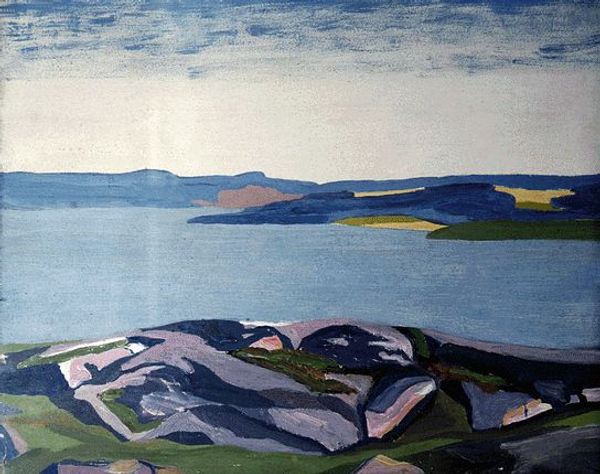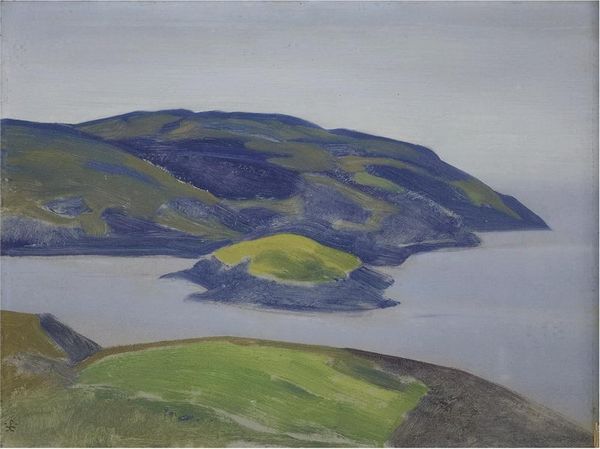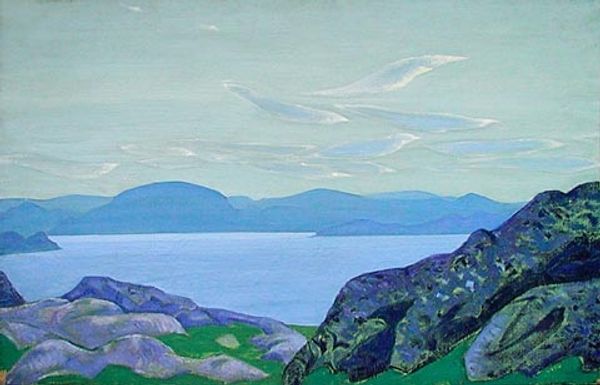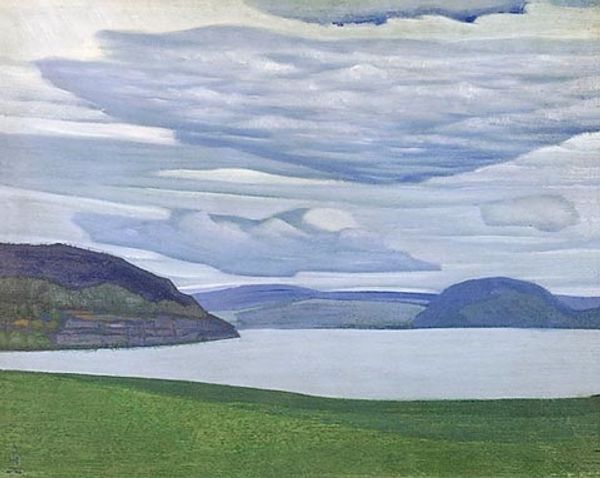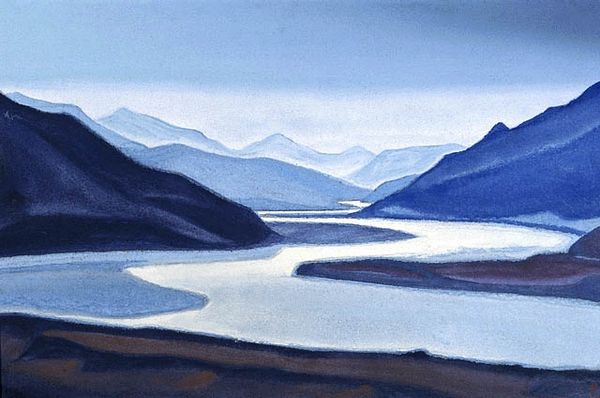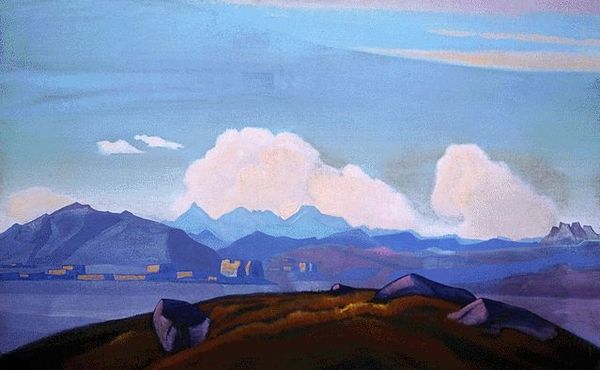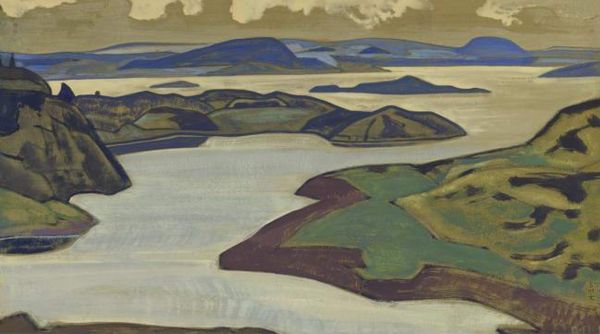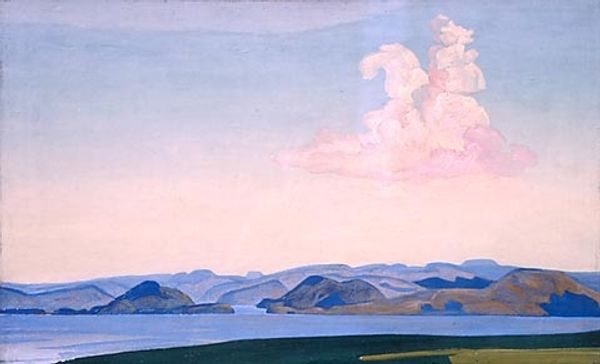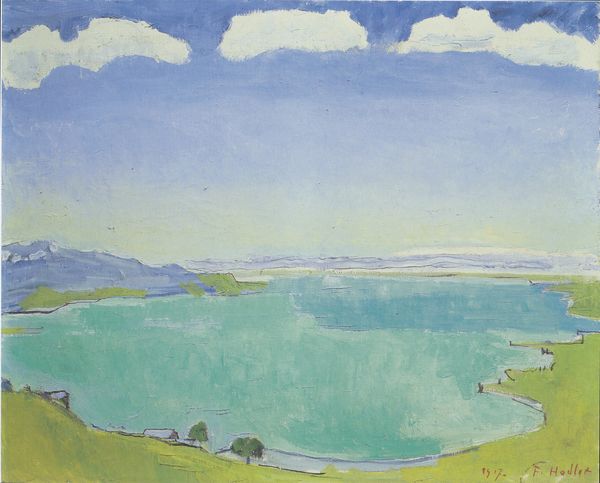
Copyright: Public domain
Curator: "Lake Ladoga Islands," painted in 1918 by Nicholas Roerich. At first glance, it strikes me as… serene. The palette is subdued, almost monochromatic, and there's a stillness to the composition. Editor: Indeed. It evokes a kind of austere beauty. But I find myself thinking about the material conditions of its production. 1918—a turbulent year globally and particularly so in Russia. Considering that backdrop, what raw materials were available to Roerich? Were there disruptions to the pigment trade? Was the support itself—canvas or wood—difficult to source? These conditions must inevitably play into the artwork’s affect and its overall historical relevance. Curator: That’s a vital point. Roerich’s position is also crucial. He straddled various cultural and spiritual movements—theosophy, Symbolism, and a fascination with ancient cultures. How does this painting articulate a broader search for cultural and spiritual renewal in the wake of widespread devastation? Was he deliberately seeking to create an image of idealized nature to offer solace, or perhaps to highlight a place apart from all the chaos of Russia at this time? Editor: I am struck by what isn't visible. While the painting clearly depicts a landscape, I see a focus on earth and land. It would be beneficial to assess the pigment analysis to determine how readily available, or difficult, these particular pigments would be during a time of upheaval in Russia. Was the choice a conscious move by Roerich? What’s its connection to labor and social class? We have an impressionist, or even perhaps romantic sensibility, used here. The material history behind this image, and what the artist tried to portray during that time, is important to contextualize this art. Curator: I think you have introduced some important things to think about when analyzing the image, thanks. What resonates with me is the potential for this artwork to connect with a contemporary audience grappling with its own anxieties and societal divisions. Art offers a space for reflection on these issues that continue today. Editor: Yes, art as material record. Understanding those conditions reframes the image.
Comments
No comments
Be the first to comment and join the conversation on the ultimate creative platform.
